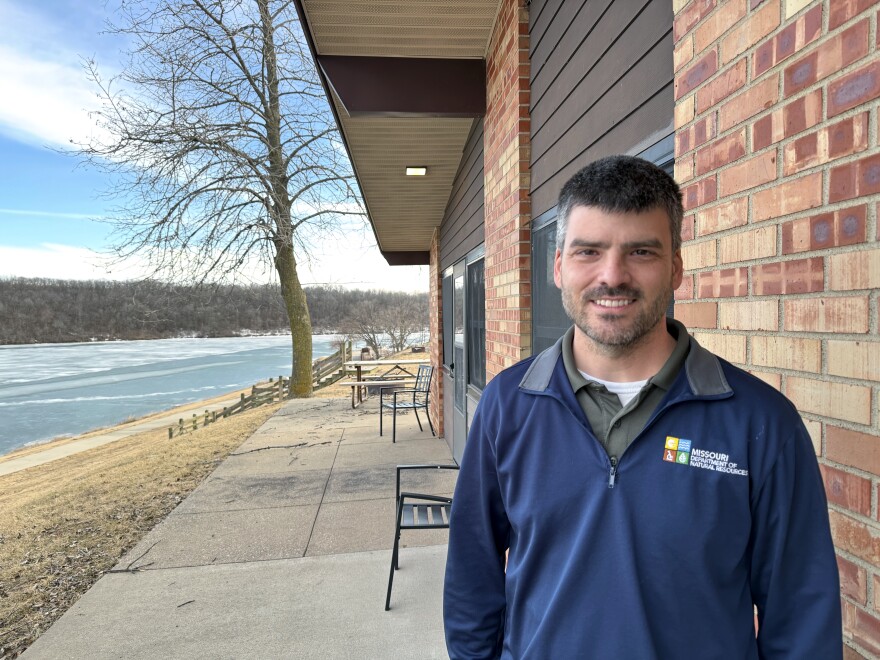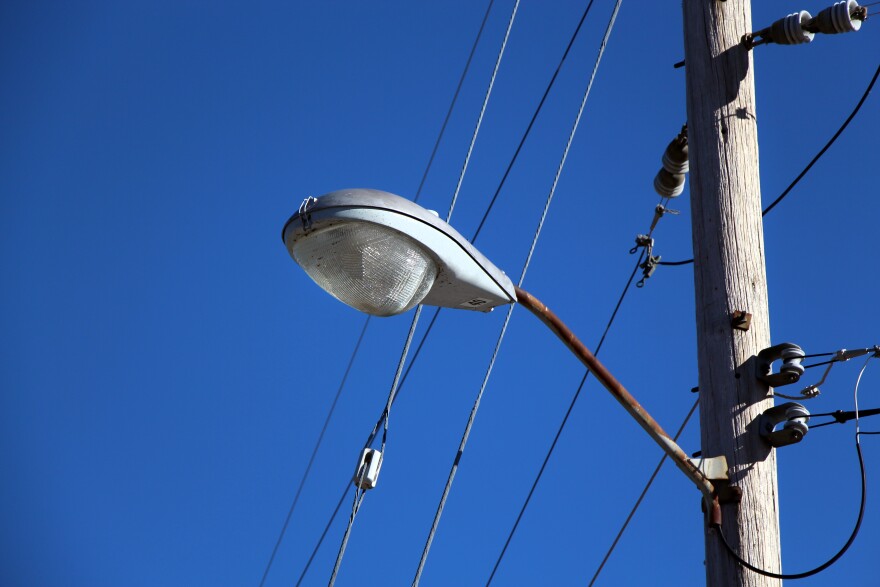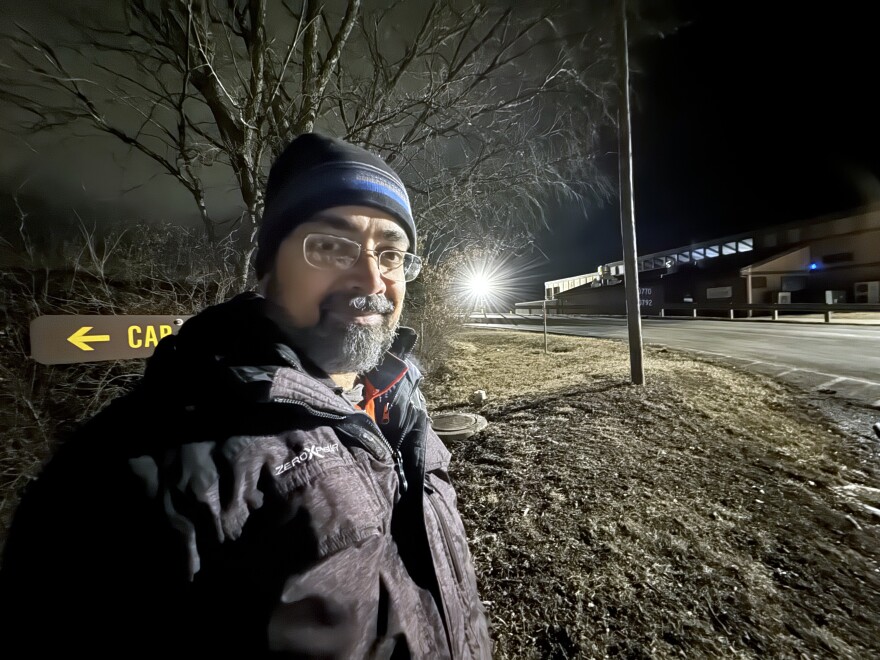
Just a few minutes’ drive outside the city limits of Kirksville, Missouri, residents get a treat that 80% of Americans no longer enjoy at home: a view of the Milky Way.
It’s one of the attractions of Thousand Hills State Park, which last year became the twelfth Urban Night Sky Place in the world.
And it makes an impact on students like Daphne Broski-Laing, who had never seen so many stars before moving to the area for college.
“I was so much more connected to the night sky,” said Broski-Laing, a native of the Kansas City metro area who graduated from Truman State University last spring.
But light pollution from Kirksville and other towns bleeds into the sky over the park.
“I am definitely worried about the way that the city is developing,” she said, “and the way that’s going to impact the view.”
It’s a common story. Artificial light emanating upward into the night sky creates skyglow. That glow is increasingly erasing stars from human view in North America. But in northern Missouri, state park staff, college students and faculty are taking action that reflects a fledgling movement in the Midwest to hold onto the night.
They’re installing the kind of bulbs and fixtures that can save energy, cut greenhouse gases, make more stars visible again, help humans sleep better and reduce the toll of light pollution on insects and other wildlife.
DarkSky International, an advocacy group with its roots in astronomy, estimates that wasted outdoor light in the U.S. contributes 21 million tons of avoidable carbon dioxide emissions annually. In money terms, that costs the country more than $3 billion.
“The technical solutions to light pollution already exist,” said Vayujeet Gokhale, a professor of physics and astronomy at Truman State University and a board member of DarkSky Missouri.
Perhaps most counterintuitively, the same solutions that reduce light pollution often help humans see better, too, by eliminating glare and excess brightness that backfire on our vision.

What does smarter lighting look like?
The night sky as seen with human eyes is getting about 10 percent brighter per year in North America, according to a study in the journal Science.
Most states and communities in the Midwest and on the Great Plains have no local rules or policies in place to curb that trend.
Yet some individuals, groups and institutions are reining in light pollution on their own.
At Thousand Hills State Park, the staff has spent three years planning, taking inventory, getting community support and fixing problematic outdoor lighting on the 3,000 acre property.
Workers have been installing fully shielded fixtures. The key is to point light downward, preventing glare and reducing skyglow.
And they’ve been putting amber-colored bulbs inside those fixtures. These serve the human eye better at night than bright white bulbs and they disrupt wildlife less. Campers and stargazers will be able to see and move around safely while better enjoying nighttime at the park.
Park employees are finished fixing almost all the lights at Thousand Hills. The exceptions are some parking lot and street lights owned by the utility company that staff estimate will take another year to address.
The progress so far — and the plan to complete all the fixes — has earned Thousand Hills State Park the recognition from Dark Sky International that is now advertised on its entrance sign: Urban Night Sky Place.
It is a badge of honor that signals park workers are doing all they can to provide visitors with an “authentic nighttime experience in the midst of significant artificial light” from the city of Kirksville and other nearby towns.
The park falls just short of earning a bigger honor, International Dark Sky Park. That distinction depends on the darkness of the sky. Although the Milky Way is visible at Thousand Hills State Park, skyglow from Kirksville and other towns corrupts the view enough to prevent the park from qualifying.
“Changing the light pollution from the area around the park — just a smidge, just a tiny amount — would change our certification,” Park Superintendent Ryan Persinger said. “We’re so close.”

The view from Kirksville
Gokhale, the astronomy professor, says a goal like that is within reach.
He recalls the moment he realized he could see the Milky Way while standing in a restaurant parking lot in the middle of Flagstaff, Arizona. In 2001, Flagstaff became the first Dark Sky city in the world.
Kirksville and nearby towns make up a micropolitan area with a population of about 30,000. That’s just one-fifth as many people as the Flagstaff metropolitan area. Yet views of the Milky Way have vanished in city limits and iconic stars are close behind.
“One of the taglines for Kirksville is ‘the North Star of Missouri,’” he said. “We have gotten to a point where you can barely see the North Star from Kirksville now.”
Gokhale, Broski-Laing and some of her fellow students at Truman State University believe the school could set an example for how the city could improve the utility of its lighting and simultaneously reduce skyglow.
In recent years, they inventoried all of the university’s outdoor lights and researched what it would take to improve them. Then they applied for grants from a campus sustainability committee to start retrofitting outdoor fixtures and switching bulbs.
As at Thousand Hills State Park, the work includes making sure that artificial light travels downward.
In towns and cities across the U.S. and the Midwest, a lot of outdoor lighting is poorly angled. This allows light to travel horizontally and directly into the eyes of passersby, causing glare that makes it more difficult for people to see their surroundings well.
Additionally, fixtures often release light upward. Lamp posts that are intended to help people see sidewalks, for example, are often globe shaped without an opaque cover on top.
This wastes a significant portion of the wattage by allowing it to travel straight up into the sky, where it becomes skyglow and doesn’t help people see their surroundings.
The ongoing improvements at Truman State also involve switching to amber LEDs.
Broski-Laing says the campus lights that have so far been fixed look dimmer from afar, but they actually light the ground better.
“We’re hoping that it can get the ball rolling for downtown Kirksville,” said Broski-Laing, now a graduate student at the University of Virginia.
The benefits will extend beyond reducing her alma mater’s contribution to Kirksville’s skyglow. It will help students and wildlife sleep better, too.
She saw firsthand how excessive light pollution affected birds when she would walk home after working late evenings in a lab at Truman State.
“I would go outside and it would be midnight or one in the morning and the birds would be chirping,” she said. “It was pretty unsettling.”
Some outdoor fixtures also shone light straight into student dorm rooms all night long, giving her and her classmates extra motivation to seek grants to fix the problem.
Light pollution disrupts sleep for humans and wildlife alike. For nocturnal animals, such as fireflies, it interferes with their ability to feed and mate. In the case of migrating birds, light pollution is one key reason that hundreds of millions of them die each year by slamming into buildings.


The advent of bright white LEDs exacerbated problems caused by light pollution. They emit more blue spectrum than amber bulbs do. This mimics daylight and interferes with the internal biological clocks of humans and other animals.
Not getting enough quality sleep is linked to health problems such as depression and heart problems.
In 2016, doctors took a stance on the use of bright white outdoor lighting at an American Medical Association meeting.
“Blue-rich LED lighting can decrease visual acuity and safety, resulting in concerns and creating a road hazard,” the group said in a press release, also warning about associations between this lighting and impaired daytime functioning and obesity.
The group urged communities to opt for amber LEDs to the extent possible and to install shielded fixtures to point light downward and minimize glare.
Still, improving existing outdoor lighting takes time and money. Changing a simple light fixture outside a cabin door costs less than $100, Persinger said, but replacing the lights on poles at the park can cost more than $1,000 each.
Gokhale says widespread change will take time. It requires building a broader public interest and understanding of light pollution and its solutions.
“How do you raise this issue to a level where (businesses, homeowners and city leaders) think action is required?” he said. “Because let’s face it, they have 10,000 other things to worry about.”
Still, he remains hopeful that communities will ultimately opt for better outdoor lighting that could help people continue for many generations to enjoy a stargazing experience as old as humanity.
“Just sitting and looking up into the sky,” he said, “and letting your imagination go wherever it takes you.”
Celia Llopis-Jepsen is the environment reporter for the Kansas News Service and host of the environmental podcast Up From Dust. You can follow her on Bluesky or email her at celia (at) kcur (dot) org.
The Kansas News Service is a collaboration of KCUR, Kansas Public Radio, KMUW and High Plains Public Radio focused on health, the social determinants of health and their connection to public policy.
Kansas News Service stories and photos may be republished by news media at no cost with proper attribution and a link to ksnewsservice.org.







